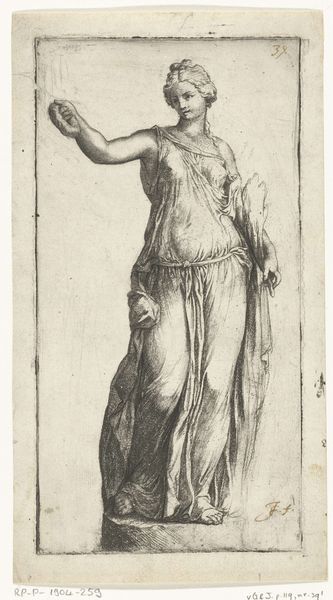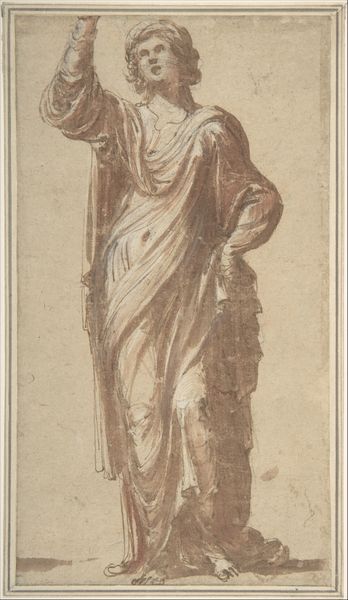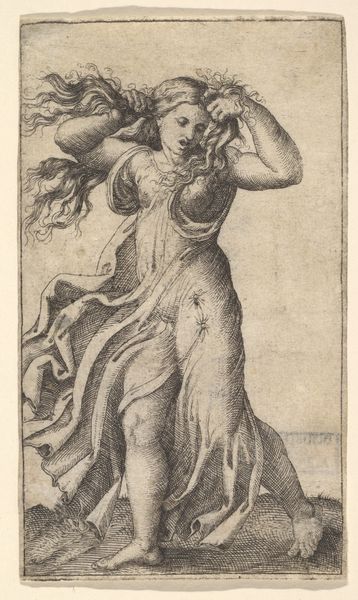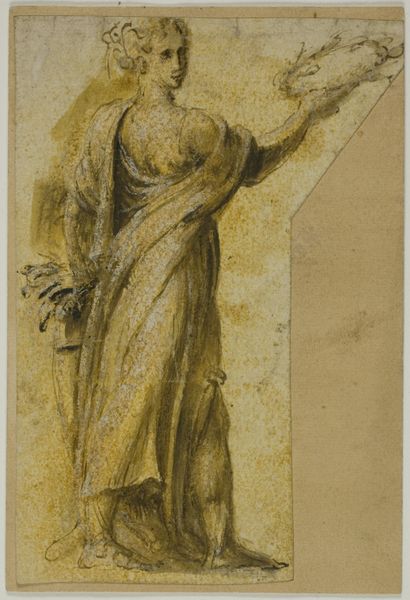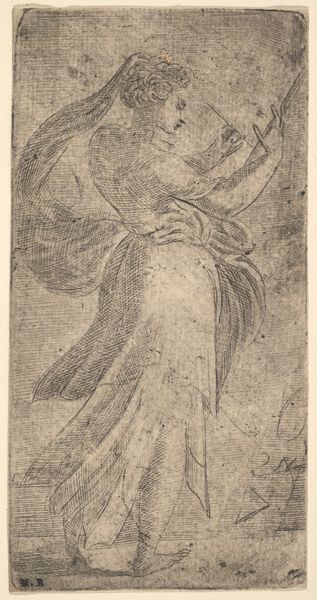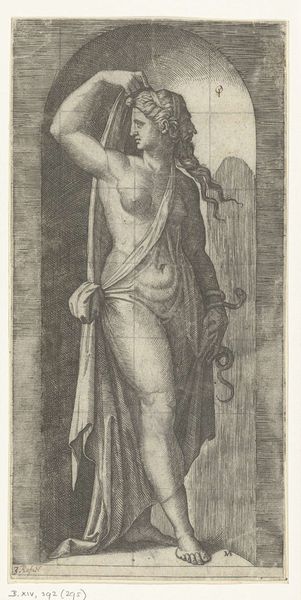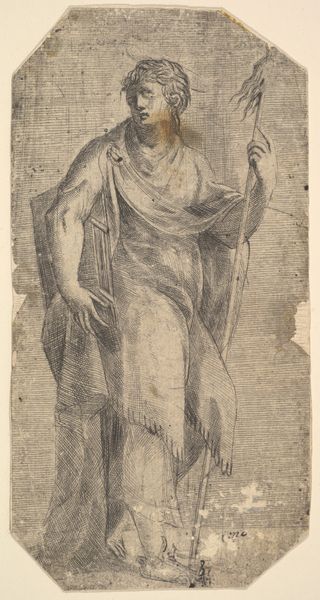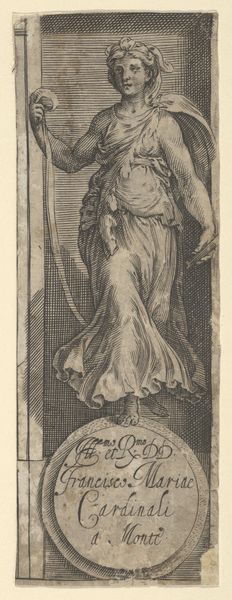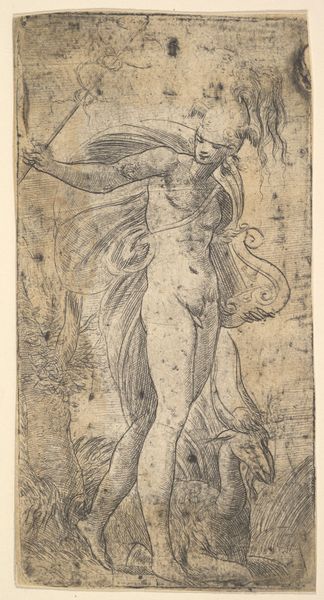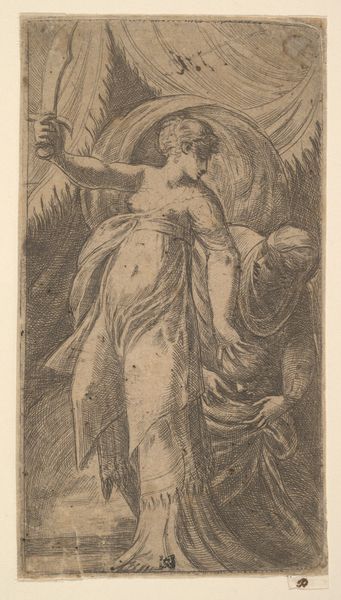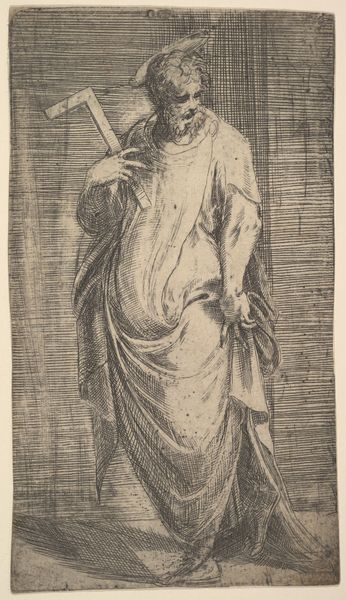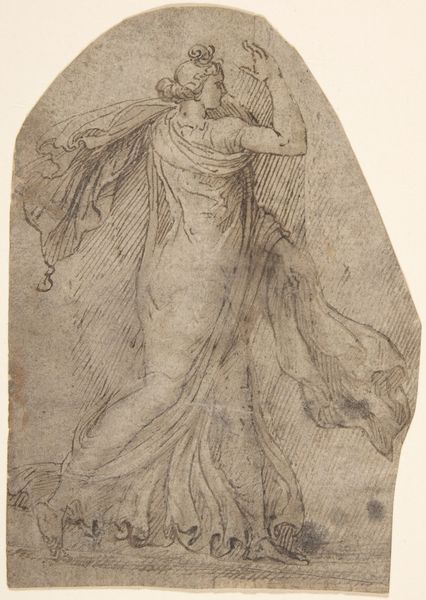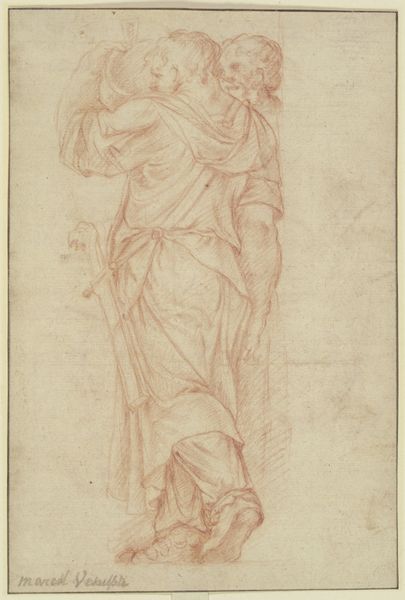
Diana firing her bow viewed from behind 1533 - 1543
0:00
0:00
drawing, print, intaglio, pencil, engraving
#
pencil drawn
#
drawing
# print
#
intaglio
#
pencil sketch
#
charcoal drawing
#
mannerism
#
figuration
#
11_renaissance
#
pencil drawing
#
pencil
#
line
#
history-painting
#
nude
#
engraving
Dimensions: Sheet: 4 3/4 × 2 15/16 in. (12 × 7.5 cm)
Copyright: Public Domain
Curator: Immediately striking is the use of line, an almost frantic, energetic quality to the engraving that vibrates on the surface. Editor: We're looking at "Diana firing her bow viewed from behind," an intaglio print by Andrea Schiavone, also known as Andrea Meldola, dating from around 1533 to 1543. It is currently held in the collection of the Metropolitan Museum of Art. Curator: The figure of Diana is rendered with this incredible dynamism, almost a whirlwind of hatching. It gives a sense of immediacy, of a figure caught mid-motion. The line dominates to define contours and shadows. The pose and the drapery exhibit a beautiful sense of flow. Editor: It’s interesting how Schiavone uses this visual language to portray Diana, the Roman goddess of the hunt. While the focus is very much on the classical form and pose, and the skill with which the body and drapery are rendered, it's worth considering how the subject would be received, especially considering the active presence of female figures at court. Curator: The strategic decision to show the goddess from behind focuses our attention on the play of line and the curvature of the back, which itself echoes the curve of the bow. It is very clear that he is preoccupied with conveying movement and the energy of this huntress. The background is reduced almost entirely to an atmospheric etching, serving simply as a stage for this classical heroine. Editor: Exactly, and consider too that prints at this time played a crucial role in disseminating classical motifs and ideals throughout Europe. Schiavone, with this slightly frenetic and highly stylized version of a classical subject, participated in constructing and negotiating those ideals. The figure of Diana would be seen as a representation of virtue and strength. Curator: The brilliance in this work comes from the immediacy of line that produces form and a classical narrative at once. Editor: I agree, but its worth emphasizing the print's wider contribution to how classical ideals are formulated. It reflects how those ideals are shaped and reinterpreted by various social factors, artistic styles, and tastes.
Comments
No comments
Be the first to comment and join the conversation on the ultimate creative platform.
